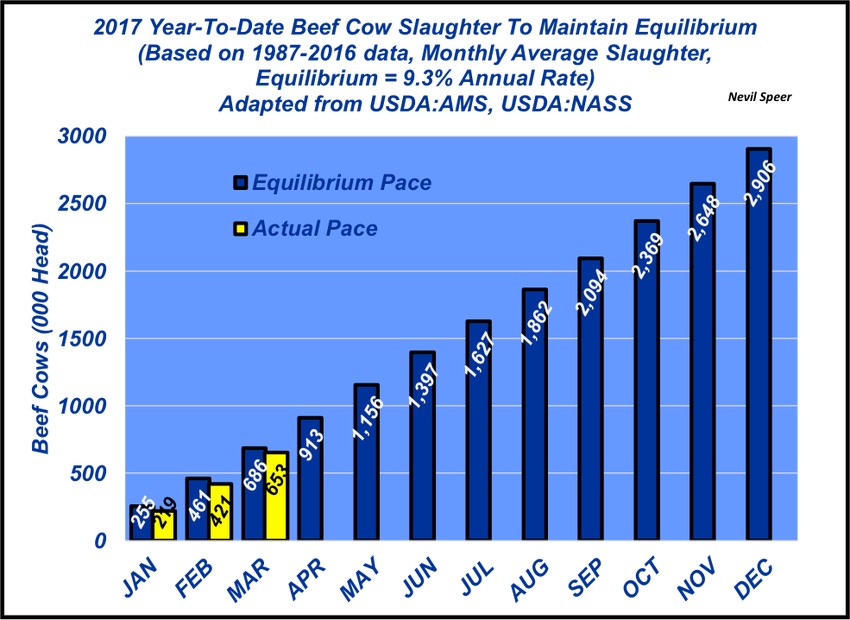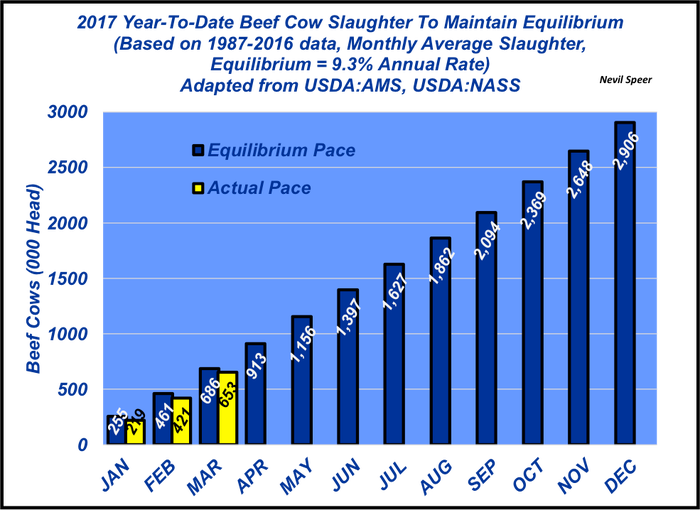What’s ahead for beef cow slaughter?
If early trends hold true, ranchers could be holding mature cows back for another year instead of culling.
May 15, 2017

Several months ago, this column highlighted the importance of the beef cow slaughter rate to the beef cow inventory. Based on data between 1987 and 2016, the equilibrium slaughter rate runs around 9.3%. That is, bigger slaughter as a percentage of the cowherd means a smaller cowherd in the following year, while a slower rate than 9.3% spells expansion. The data is fairly reliable with only a few outliers—1993, 2015 and 2016.
Within that analysis, it’s important to monitor what’s occurring month to month—or at least quarter to quarter. Monitoring the rate on an on-going basis allows us to see what producers may be thinking as we enter into the all-important fall culling season.
Additionally, monitoring this comparison provides some indication for the cowherd inventory prior to USDA coming out with the agency’s annual inventory reports. Accordingly, this week’s data reflects two items.
First, the average monthly beef cow slaughter rate during the previous 30 years is applied to the 2017 starting inventory. For example, the average January slaughter rate in the previous 30 years has run right around 0.82%; applying that to the 2017 annual base equals about 255,000 beef cows. The annual total – 2.91 million – is equivalent to 9.3%.

Second, the data also reflects what’s actually occurred to date in 2017. Through the first quarter, beef producers have culled 653,000 cows, compared to the expectation of 686,000 cows. While the actual difference is, to date, inconsequential (33,000 cows), the trend is running 5% behind expectations. If that continues, it indicates we could be in store for some significant cow retention in 2017.
What’s your view of the current trend? Will beef producers catch up with the trend in the coming months? Or are we seeing early indications of continued expansion in the country? What are your plans for 2017? Leave your thoughts in the comment section below.
About the Author(s)
You May Also Like





